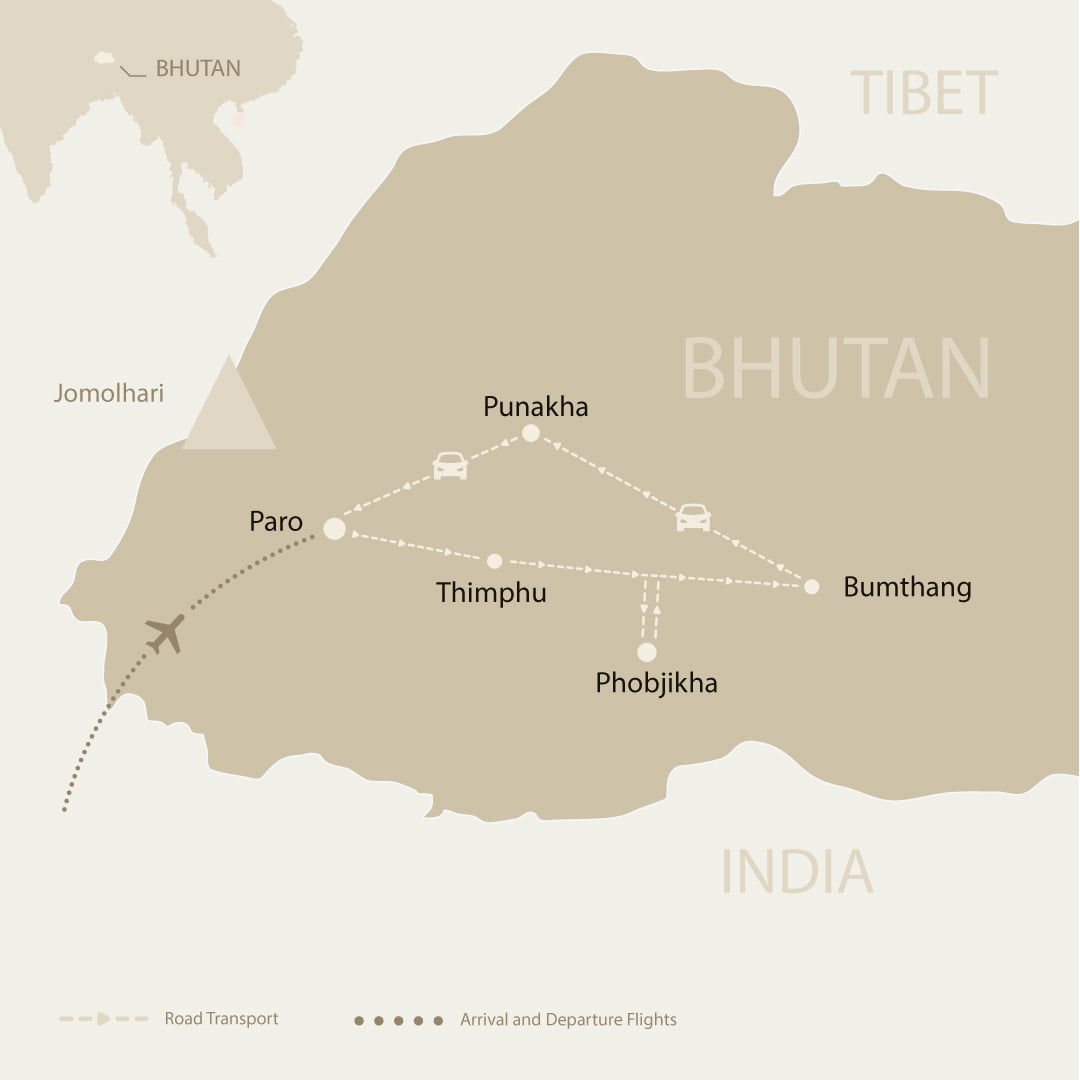Steeped in tradition and legend and framed by mountains and valleys, the Himalayan Kingdom of Bhutan has long been shrouded in mystery.
Join us on an exclusively designed itinerary to discover the land of pure happiness and explore its history, culture, people, and landscapes, culminating with a climb to the incredible Tiger’s Nest.
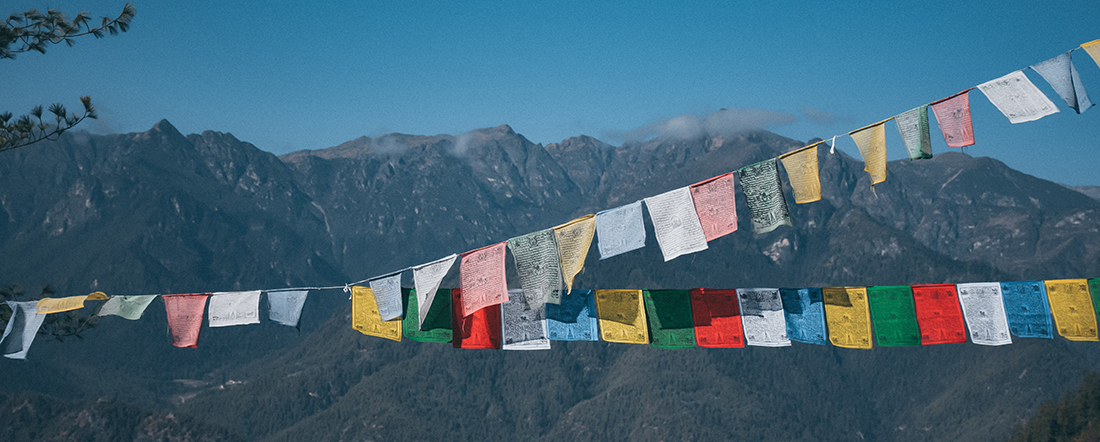 Day 1
Day 1
Welcome to Bhutan! Bhutan’s first gift, as you disembark from the aircraft will be cool, clean fresh mountain air. After being met by Intrepid’s representative, drive to the capital Thimphu with an enroute stop at Chuzom, the confluence of Thimphu and Paro rivers. Three different styles of stupas; Tibetan, Nepalese and Bhutanese adorn this confluence. Shortly before reaching Chuzom, you will see Tschogang Lhakhang, “the temple of the excellent horse”. It is a private temple, built in the 15th century, as the result of visitation from Balaha, the excellent horse, a manifestation of Chenrezig, the compassionate Buddha. On arrival into Thimphu, check in to your hotel. Thimphu is a unique city with an unusual mixture of modern development alongside ancient traditions. With a population of about 90,000, it is perhaps still the world’s only capital city without a traffic light. In the evening, go on an exploratory walk around Thimphu Main Street and market area. Also visit the Local Crafts Bazaar, to browse through examples of Bhutan's fine traditional arts. Here you can buy hand-woven textiles, Thangkha paintings, masks, ceramics, slate and wood carvings, jewellery, interesting items made from local materials. LD
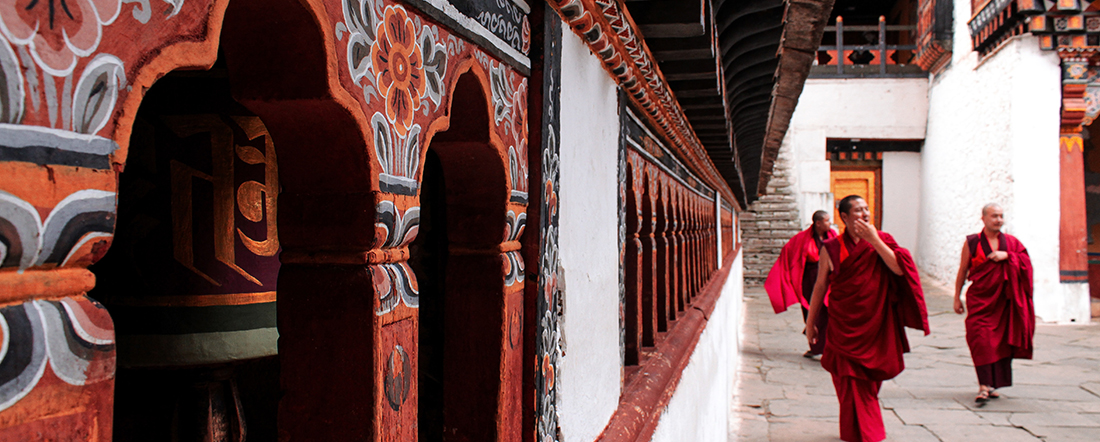 Day 2
Day 2
After breakfast, you will spend the day sightseeing in Thimphu valley. Visit The Institute for Zorig Chusum (commonly known as the Painting School) where students undergo a 6-year training course in Bhutan’s 13 traditional arts and crafts. Later visit the Textile Museum, which provides insight into one of Bhutan’s most distinct art forms. Also visit Simply Bhutan, a living museum and studio encapsulating the cultural heritage of the Bhutanese people. After lunch take a short drive (15 kms) to Pangri Zampa, one of the oldest monasteries in Bhutan. Here is a monastic school where Buddhist student’s monks learn Lamaism and astrology based on Buddhist philosophy. Afterwards, visit Buddha Point (Kuensel Phodrang) to gain a good overview of the Thimphu valley, and pay your obeisance and offer prayers to the Buddha, the largest statue in the country. Also visit King's Memorial Chorten continuously circumambulated by people, murmuring mantras and spinning their prayer wheels. Later visit the Trashi Chhoe Dzong, an impressive fortress/monastery housing the Secretariat building, the throne room of His Majesty, the King and various government offices. It is also the summer residence of Chief Abbot and the central monk body. BLD
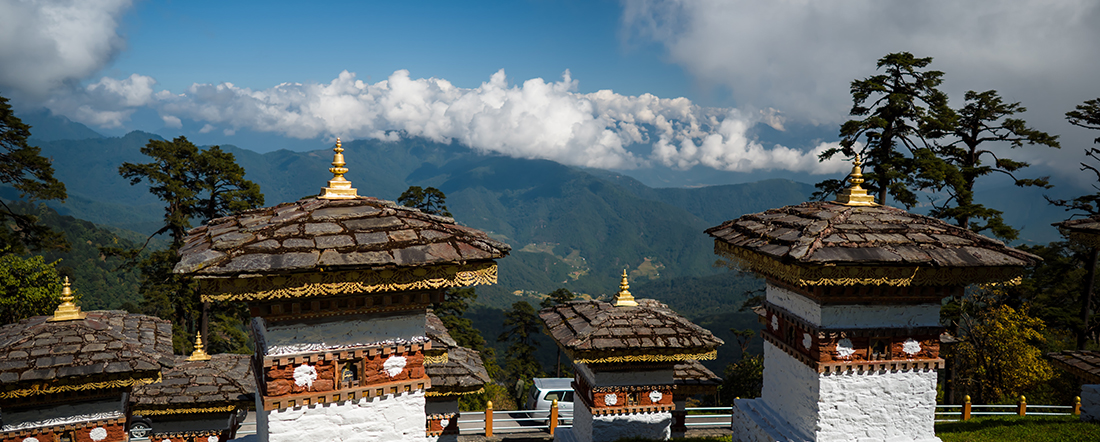 Day 3
Day 3
After breakfast, check-out from the hotel & drive to Gangtey (Phobjikha) enroute visiting Dochula Pass (Altitude 3080m). In Bhutan, the passes are marked by a large Bhutanese Chorten and prayer flag. Dochula pass offers the most spectacular view over the high peaks of the eastern Himalayas on a clear day. Also travel via Wangdue Phodrang, where you can visit the local market and explore newly developed towns. The district of Wangdue Phodrang is also famous for its bamboo products, slate and stone carvings. Further ahead pass through dense forests and oak, rhododendron tress, before arriving at Gangtey (Phobjikha). The valley of Gangtey is one of the most beautiful spots in Bhutan. The surprise of finding such a wide, flat valley without any trees after the hard climb through dense forests is augmented by an impression of vast space, and extremely rare experience in Bhutan where most of the valleys are tightly enclosed. In the afternoon, take a walk around Gangtey village and visit Gangtey Goempa, the only Nyingmapa monastery in this region. BLD
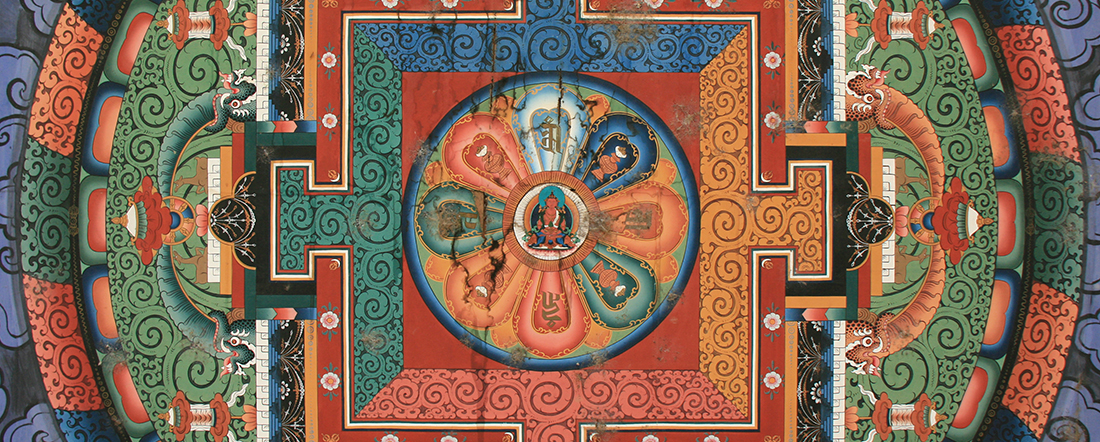 Day 4
Day 4
After breakfast, drive to Bumthang crossing Pele-la pass (3300m/10830 ft) via Trongsa. The Pela La pass is marked by large white Chorten prayer flags. There is an abrupt change in vegetation at this point, with mountain forest replaced by high altitude dwarf bamboo. Stop enroute at Chendbji Chorten, patterned on Kathmandu’s Swayambhunath Stupa, with eyes painted at four cardinal points. After lunch at Trongsa visit Trongsa Dzong, built in 1648, which was the seat of power over central and eastern Bhutan. Also visit Ta Dzong, a recently opened fort in Trongsa. The Ta Dzong, a cylindrical stone structure rising five stories, was built in 1652 by Chogyal Minjur Tempa, after more than 350 years, it has been resurrected into a classy museum, that represents a tasteful blend of tradition and modernity. A further 68 km drive across the Yutong-la pass (3,400m/ 11,155 ft) finally brings you to wide open cultivated Bumthang valley. Bumthang is the general name given to the combination of four valleys – Chumey, Choekhor, Tang and Ura with altitudes varying from 2,600m to 4,000m. It is home to many prominent Buddhist temples and monasteries. BLD
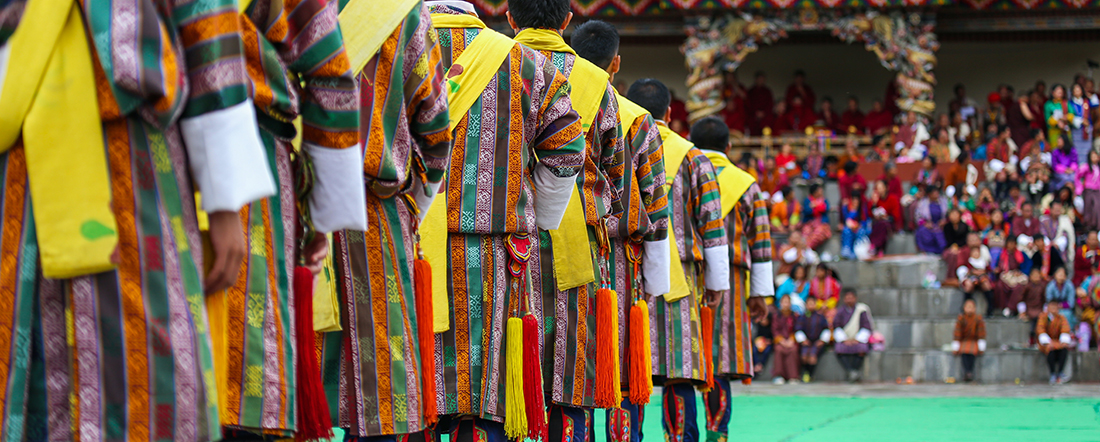 Day 5
Day 5
After breakfast proceed for a tour of Bumthang valley: Visit Kurje Lhakhang, where the saint Padma Sambhava subdued a local demon and left his body imprint on a rock, the Jambey Lhakhang (7th century temple), Tamshing Lhakhang (housing some of the oldest wall paintings in Bhutan) and Jakar Dzong (administrative center of the region). Stroll in the village, visit the little handicrafts shop at the entrance to the town, and perhaps have some refreshments at a local restaurant. In the afternoon, take a short hike to Lhodrak Kharchhu Monastery. Located above the main town, about 3 km from Chamkhar town, the monastery was founded by Namkhai Nyingpo Rinpoche in 1984 who was recognized at a very young age by H.H. the 14th Dalai Lama and H.H. 16th Karmapa as the reincarnation of a Tibetan lama. The monastery has become part of an extensive effort to preserve and revitalize Tibetan culture. BLD
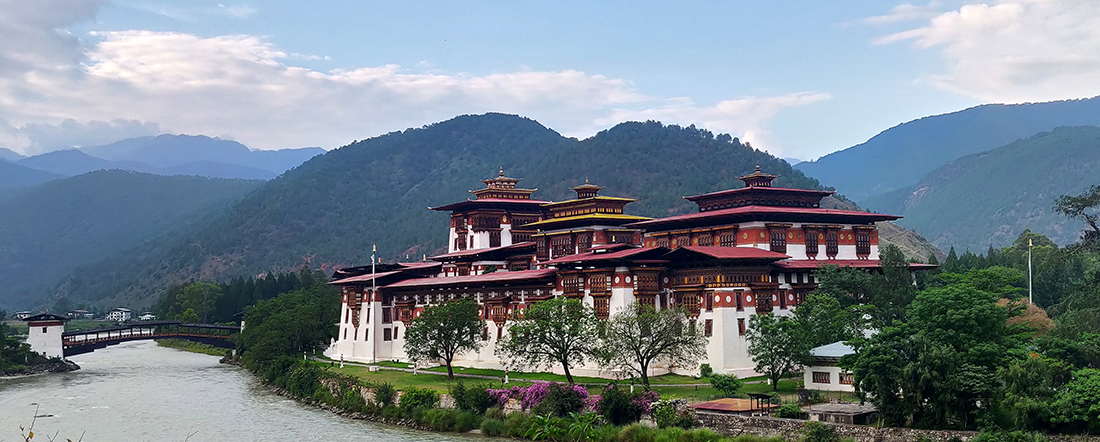 Day 6
Day 6
After breakfast, check-out from your hotel and drive to Punakha, the old capital town of Bhutan. After checking into the hotel, proceed to visit Punakha Dzong, a massive structure built at the junction of two rivers. It was the capital of Bhutan until 1955, and still serves as the winter residence of the monk body. The evening can be spent exploring Punakha village located right on the bank of the river. BLD
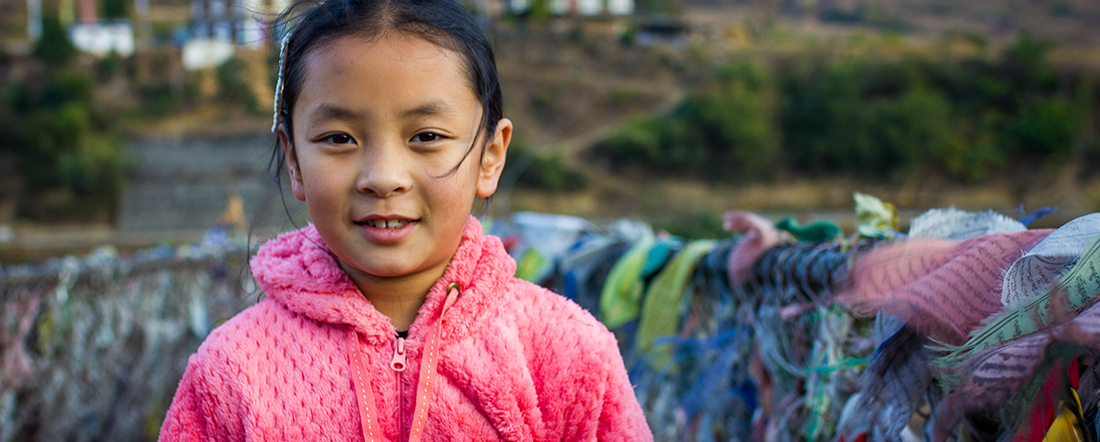 Day 7
Day 7
After breakfast, it’s a short drive to Chimi Lhakhang where we enjoy a walk through paddy fields and villages. The Chimi Lhakhang, situated on a hillock in the centre of the valley, is also known as the temple of fertility. It is widely believed that if couples who do not have children and are wanting one pray at this temple, they are usually blessed with a child very soon. The trail leads across rice fields to the tiny settlement of Pana, meaning ‘field’. A walk through the village near the temple will give you rare glimpses into the daily life and lifestyle of the villagers. Later continue the drive to Paro along scenic highways - enroute visit Simtokha Dzong, the oldest fortress of the country built in 1627 which now houses the School for Buddhist studies. On arrival in Paro, check into the hotel. After lunch, proceed to visit Ta Dzong, originally built as a Watchtower, which now houses the National Museum, and afterwards it’s a short walk down the trail to visit Rinpung Dzong (Paro Dzong), meaning (“fortress of the heap of jewels”), which has a long and fascinating history. BLD
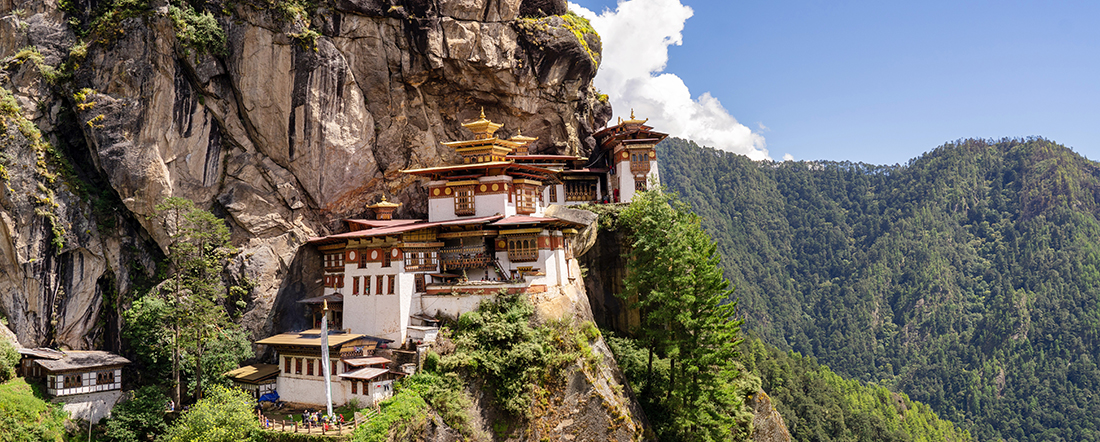 Day 8
Day 8
After breakfast, it’s time for our excursion to Taktshang Monastery or Tiger’s Nest (approx. 5 hours walk). It is one of the most famous of Bhutan’s monasteries, perched on the side of a cliff 900m above the Paro valley floor. It is said that Guru Rinpoche arrived here on the back of a tigress and meditated at this monastery and hence it is called ‘Tiger’s Nest’. This site has been recognised as a most sacred place and visited by Shabdrung Ngawang Namgyal in 1646 and now visited by all Bhutanese at least once in their lifetime. On 19 April 1998, a fire severely damaged the main structure of the building but now this Bhutanese jewel has been restored to its original splendour. In the afternoon, drive to Drukgyel Dzong, a ruined fortress where Bhutanese warriors fought Tibetan invaders centuries ago. The snowy dome of sacred Chomolhari, "mountain of goddess'' can be seen in all her glory from the approach road to the Dzong. Towards the evening, visit the 7th century Kyichu Lhakhang, one of the 108 temples built in the Himalayas by Tibetan King, Songtsen Gampo. The building of this temple marks the introduction of Buddhism in Bhutan. BLD
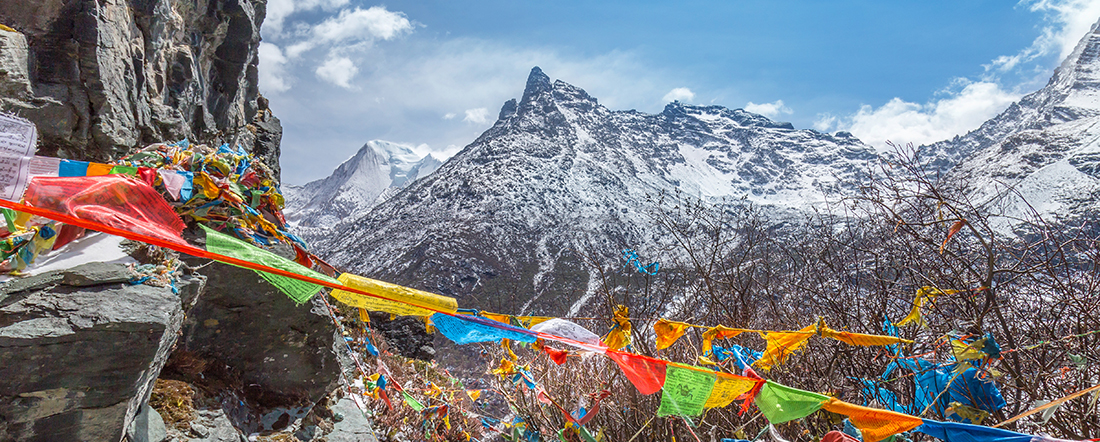 Day 9
Day 9
After an early breakfast at the hotel, transfer to the airport for our onward flight. Intrepid’s representative will help with exit formalities and then bid us farewell. B
From $5,490pp twin share
If this is the adventure for you, we’re here to make it happen. Contact us for more information.
for the latest offers and updates
© Back Track Adventures 2025 | ABN: 89 648 174 396
